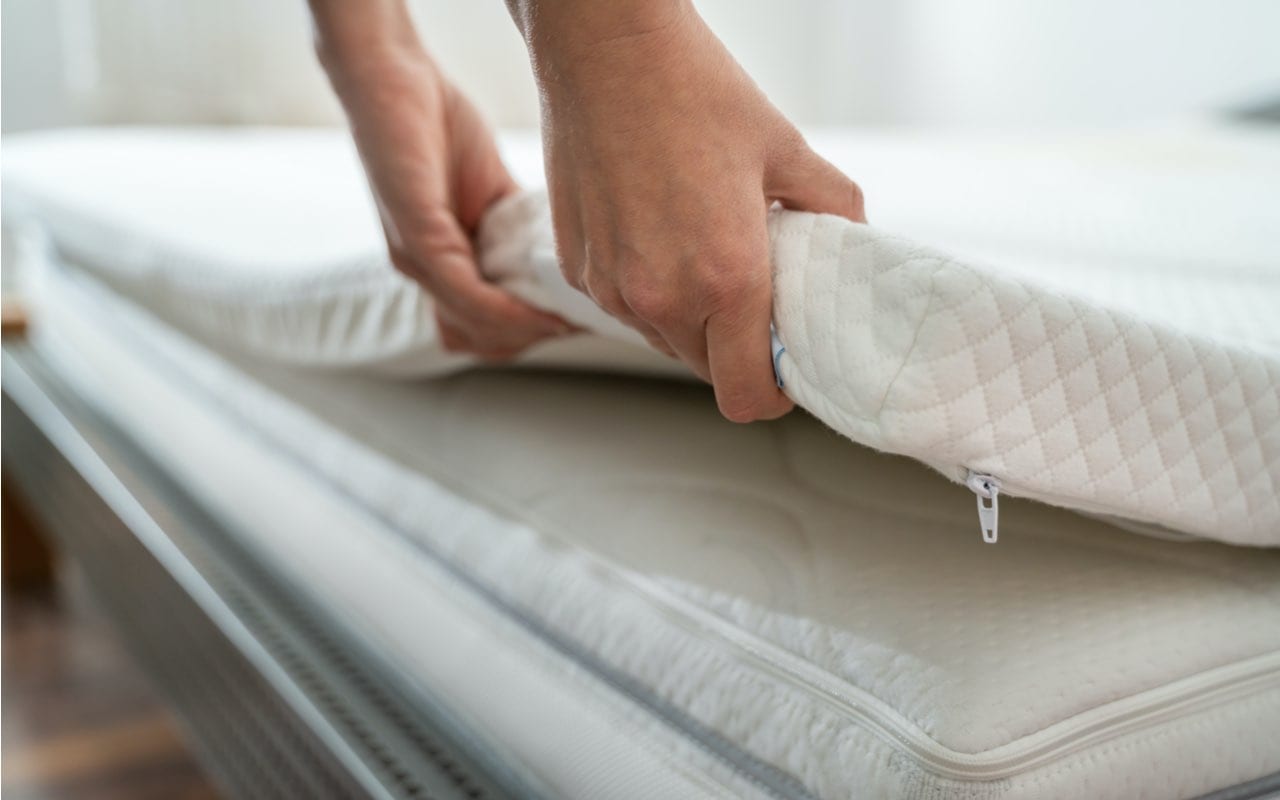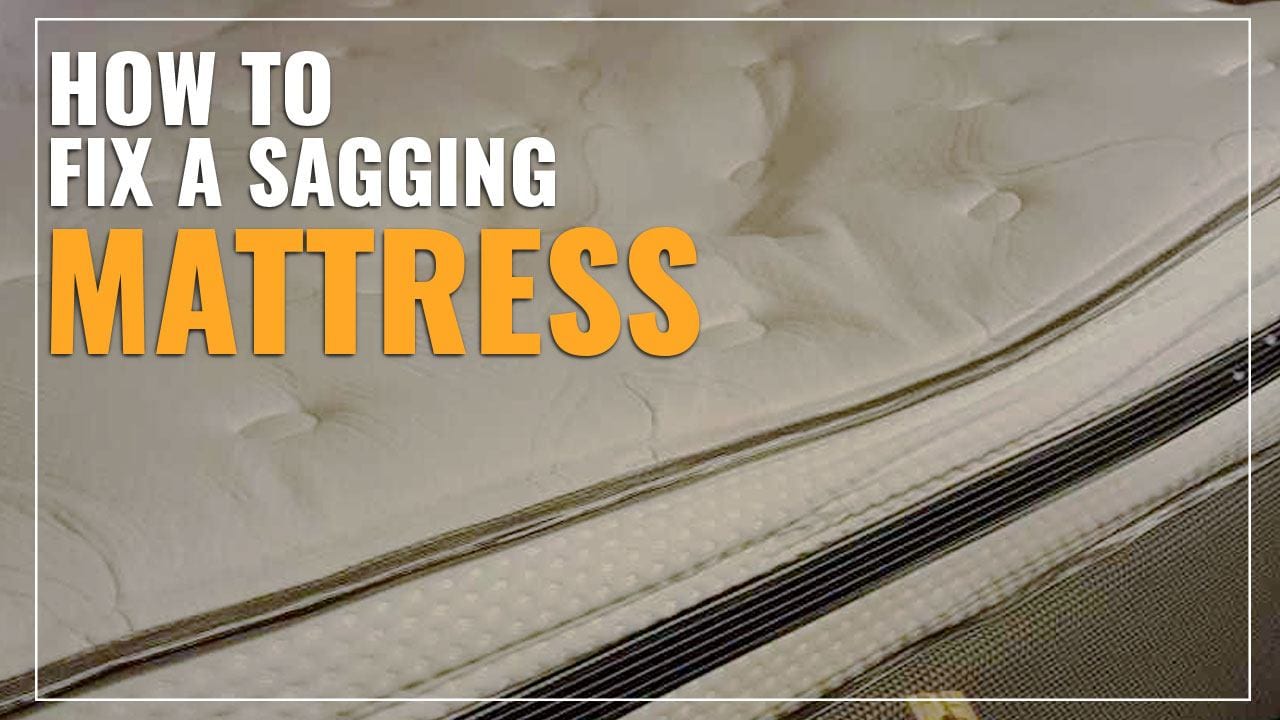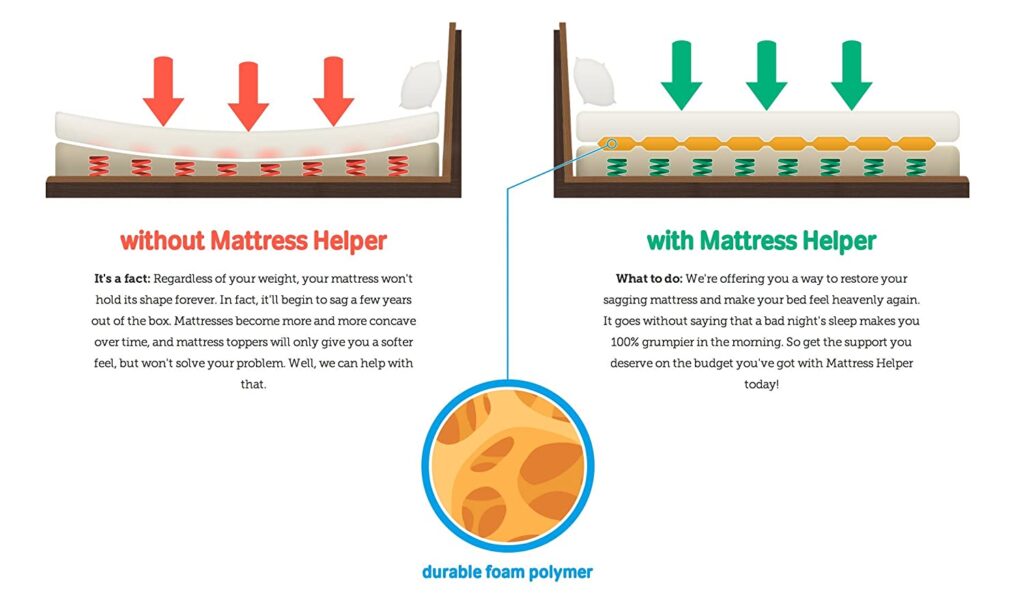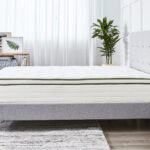Sleeping on a sagging mattress can cause discomfort, aches, and pains, and it can also impact your quality of sleep. But you don’t have to buy a new mattress to get your bed feeling like new again. In this article, we’ll provide you with some simple tips on how to fix a sagging mattress and get your bed back to feeling like new.
Causes of a Sagging Mattress

Wear and Tear
Wear and tear is a natural part of owning a mattress, but it can cause sagging if not managed properly. Over time, the mattress will start to lose its shape and give way to gravity, leading to sagging. This can be due to improper mattress care, such as not flipping it regularly or not using the right mattress cover.
Poor Quality
Poor quality is another common cause of mattress sagging. If your mattress is made with low-grade materials, it won’t be able to provide the same level of support as one made with higher-grade materials. As a result, it will start to sag over time, leading to an uncomfortable night’s sleep.
Fortunately, there are a few simple steps you can take to make your mattress more comfortable and get your bed back to feeling like new.
Solutions to Fix a Sagging Mattress

Rotating and Flipping the Mattress
Rotating and flipping your mattress is the fastest and simplest way to fix a sagging mattress. By changing the orientation of the mattress, you can help to evenly distribute the weight and extend the life of your mattress. It’s recommended to rotate and flip your mattress every three months.
Replacing the Mattress
If your mattress is over seven years old, it may be time to replace it. A mattress that is too worn or aged can start to sag and become uncomfortable, so replacing it with a new one may be the best solution. Look for a mattress that is specifically designed to provide support and comfort, and avoid mattresses that are too soft.
Mattress Toppers and Pads
Adding a mattress topper or pad to your mattress is another way to fix a sagging mattress. Mattress toppers provide an extra layer of cushioning and support, which can help to even out any dips and sags in the mattress. When selecting a mattress topper, make sure that it is firm enough to provide the necessary support.
Box Spring Foundation
A box spring foundation is a great way to provide extra support for a sagging mattress. The box spring will help to evenly distribute the weight, reducing any sagging and providing a more comfortable sleeping surface. Make sure to check the box spring for any signs of wear and tear, and replace if necessary.
Supportive Mattress Frame
Using a supportive mattress frame is another way to fix a sagging mattress. A frame with adjustable slats can help to provide additional support, and can also help to extend the life of your mattress. Look for a frame that is made of high-quality materials, and make sure to check the slats for signs of wear and tear.
Air Mattresses
Air mattresses are a great solution for those looking to fix a sagging mattress. Air mattresses are designed to evenly distribute the weight, and can be adjusted to provide the perfect amount of support and comfort. Air mattresses are also relatively inexpensive, and are easy to store when not in use.
Making a Memory Foam Mattress More Comfortable
Adding a Topper
Adding a mattress topper to your memory foam mattress is a great way to make it more comfortable. A topper adds a layer of cushioning that can help relieve pressure points and make the mattress less likely to sink in the middle, or sag. Look for a topper that is made of a high-density, supportive foam, or a combination of memory foam and polyurethane. This will ensure that the topper retains its shape, and that you get the most out of it.
Changing Sleeping Position
If your memory foam mattress is sagging in the middle, it may be because of your sleeping position. If you sleep on your stomach or side, your body weight will be concentrated in those areas, causing the mattress to sink. Try switching to a back sleeping position, which helps keep your body weight evenly distributed across the mattress.
Keeping the Room Well-Ventilated
Memory foam mattresses need to be kept in a well-ventilated room in order for them to retain their shape and support. If your room is too humid or too dry, it can cause the memory foam to lose its shape and cause it to sag. Make sure to keep your room well-ventilated, so that your mattress stays in top shape.
Adding a Mattress Protector
Adding a mattress protector to your memory foam mattress is a great way to ensure that it stays in top condition. A mattress protector can help protect the mattress from dirt, dust, and spills, and it can also help keep it from sinking in the middle or sagging. Look for a mattress protector that is made of a breathable material, so that your mattress can still get the air it needs.
By following these simple tips, you can help keep your memory foam mattress from sinking in the middle, or sagging, and keep it feeling like new. If you’ve been wondering why does my mattress sink in the middle, then these tips should help you get your bed back to feeling like new again.
Frequently Asked Questions
What are the Signs That I Need to Fix My Sagging Mattress?
If you feel like you are sinking into the mattress, wake up with back pain, or notice lumps or dips in the surface of the mattress, these are all signs that your mattress is sagging and needs to be fixed. Other signs include an uneven sleeping surface, a mattress that is no longer comfortable, or an older mattress that has lost its shape and support.
How often should I replace my mattress?
Generally, you should replace your mattress every 8-10 years. Over time, mattresses can start to sag, lose their shape, and become lumpy. Here are a few signs that you may need to replace your mattress:
- Your mattress is sagging, lumpy, or visibly losing its shape.
- You wake up feeling tired, achy, or with back pain.
- You have allergy symptoms that weren’t present before.
- Your mattress is over 8-10 years old.
If any of these signs sound familiar, it’s probably time to invest in a new mattress.
What Materials Can I Use to Support My Sagging Mattress?
There are several materials you can use to support a sagging mattress, including: plywood sheets placed beneath the mattress, adjustable bed risers, mattress toppers or mattress pads, or a specialized memory foam mattress support. Plywood sheets are the most cost-effective solution and should be placed along the length of the mattress, beneath the center of the mattress. Adjustable bed risers can be used to raise the height of the bed frame, providing more support to the mattress. Mattress toppers or mattress pads can also be used to provide additional cushioning and support. Finally, a specialized memory foam mattress support can also provide extra cushioning and support to the mattress.
How do I know if my mattress is too far gone to be repaired?
- Indentations and lumps: Indentations and lumps in the mattress indicate that the mattress is no longer able to provide proper support and is beyond repair.
- Stains: Stains on the mattress are often a sign that the mattress is beyond repair.
- Bad smells: Bad odors from the mattress indicate that the mattress has been exposed to moisture and is beyond repair.
- Age: An old mattress that has been used for many years may be too far gone to be repaired.
- Warranty: If the mattress is still under warranty, it may be possible to have it repaired or replaced.
Are there any health risks associated with sleeping on a sagging mattress?
Sleeping on a sagging mattress can cause back pain and other health problems. It can also make it difficult to get comfortable and restful sleep. Poor support from a sagging mattress can put strain on your neck, shoulders, and spine, leading to tension in your muscles and joints. Lack of quality sleep can lead to fatigue, irritability, and poor concentration.
Conclusion
To restore a sagging mattress to its former glory, mattress toppers and mattress pads can be used to add cushioning and support. Additionally, flipping and rotating the mattress can help evenly distribute weight and prevent sagging. Mattresses should also be kept in a cool and dry environment, as moisture can contribute to sagging. Regularly vacuuming the mattress and using mattress protectors and mattress encasements can also help maintain the mattress in good condition longer.






